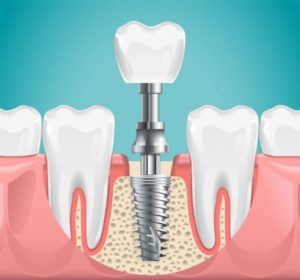
If you’ve recently undergone a tooth extraction, you’re probably wondering what to do about the new gap in your smile—and chances are, you’d probably like to replace that missing pearly white sooner rather than later! One of the best ways of doing this is with a dental implant; they’re considered the premier option for replacing missing teeth, as they’re able to replicate them in terms of look, feel, and functionality. But how soon after a tooth extraction does a dental implant in Moses Lake become a viable option? Keep reading to learn more!
Why You Shouldn’t Hesitate to Replace Missing Teeth
One of the biggest problems with missing teeth is that regardless of how the teeth were lost, it almost always leads to additional missing teeth. If there’s a gap in your smile, the teeth adjacent to the gap will gradually begin leaning towards the open space, weakening, and eventually falling out.
And once these teeth begin falling out, the door is open for all sorts of complications including bite pattern problems, difficulty eating, issues with speech, and an increased risk of oral infection. But by replacing lost teeth, you’re filling those empty sockets once more and ensuring that the neighboring teeth stay put. And there’s no better tooth replacement option than a dental implant, as it fully restores the entire structure of the lost tooth from roots-to-crown.
When You Can Receive a Dental Implant Following a Tooth Extraction
On average, patients will typically need to wait a minimum of 10 weeks or so after the extraction to receive their dental implant. This gives the mouth an ample amount of time to properly heal. However, this timeframe can sometimes vary, and there are typically three categories of implant placement to consider:
- Immediate placement – If you have sufficient bone structure and optimal oral health following your tooth extraction, your dentist may immediately place your implant following the extraction. Once the implant has been placed, it will begin fusing with your jawbone over the next few months. This type of placement is usually possible if the tooth has been lost due to trauma or injury.
- Early placement – This is also referred to as “immediate-delayed placement” and it typically occurs 2 or 3 months after the tooth is pulled. The need for this delay is often due to damaged gums or an untreated infection that needs time to heal.
- Delayed placement – If your oral health is compromised in any way, your implant won’t be able to properly fuse with your jawbone—and if it can’t fuse with your jawbone, it ultimately cannot do its job. For example, if you don’t have adequate jawbone density to support implants, you might need a supplemental bone graft, which can add several months to your timeline. You might also have a gum infection that requires extensive treatment beforehand. Your implant placement will have to be put on an indefinite hold until your mouth is capable of integrating dental implants.
If you’ve recently had a tooth pulled, you shouldn’t wait any longer than necessary to have it replaced, as this only increases the likelihood of you losing additional teeth! That said, replacing the tooth with a dental implant when the time is right will ensure that your smile is set up for a bright and healthy future.
About the Author
Dr. Craig Harder received his dental doctorate from Creighton University and has proudly served patients and families in the Moses Lake community for several years. His practice is pleased to offer several available services including dental implants. If you have any questions about the article or would like to schedule a visit, feel free to contact Dr. Harder through his practice’s website or over the phone for assistance: (509) 765-4351.
